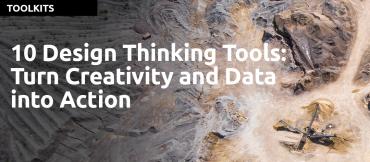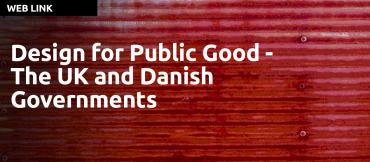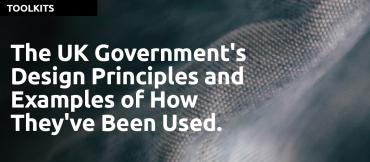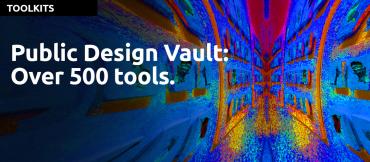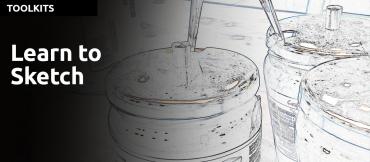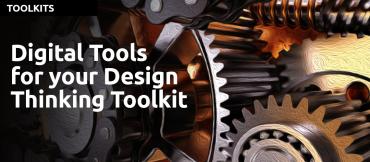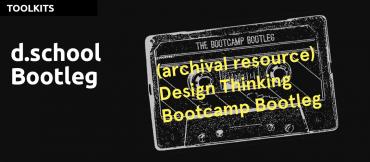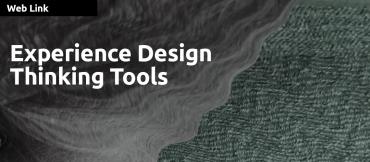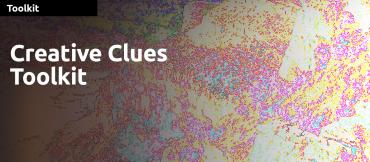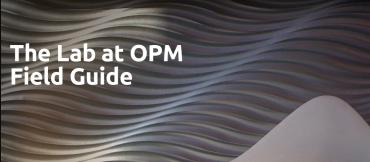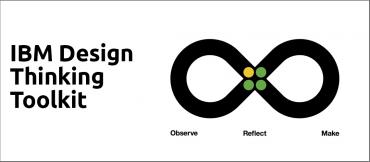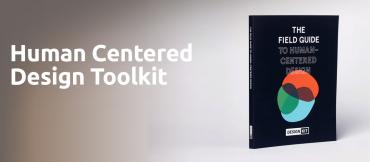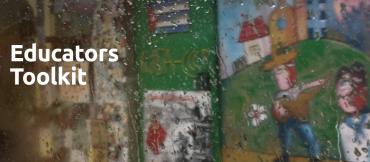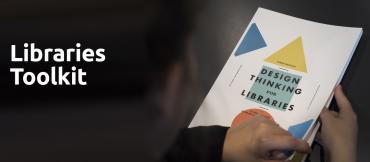
Design Thinking Tools and Toolkits
Design Thinking Toolkits provide a useful starting point to help you think through a problem that you may be encountering in your organization. Whether you need specific Design Thinking Tools or a full Design Thinking Toolkit, this is the place to start. Problem solving and innovation within for-profit and not-for-profit organizations can differ widely. Look for the right Design Thinking Toolkit to start your problem solving below.
User needs differ substantially depending on the types of problems you are trying to solve and therefore a number of more tailored Design Thinking Toolkits have been created by various organizations and educational institutions to help everyone from a group of 3rd graders solve problems to teams of employees in corporations seeking to create the next world changing digital product. These Design Thinking Toolkits have been developed from the core or basic design thinking principles to be more useful for different users. In this Toolkits section you will find, Design Thinking Toolkits for Libraries, Schools, Healthcare, Corporations and many business sectors. In addition to Design Thinking Toolkits, there are many individual tools that support the practice of Design Thinking such as Customer Journey Mapping, Day in the Life and Persona techniques documented here. Building your skills in design thinking can be accelerated by learning new tools and implementing tried and tested Design Thinking Toolkits.
Design thinking toolkits offer a range of benefits to organizations looking to develop innovative solutions to complex problems. Some of the key benefits of using design thinking toolkits include:
-
Increased creativity and innovation: Design thinking toolkits encourage participants to think outside the box and come up with creative solutions to problems. The open-ended nature of the process allows for more innovative thinking and can lead to breakthrough ideas.
-
Improved problem-solving: Design thinking toolkits provide a structured approach to problem-solving that emphasizes understanding the needs and experiences of end-users. This can lead to more effective solutions that meet the needs of the people they are designed for.
-
Collaboration and teamwork: Design thinking toolkits are designed to be used by teams of people, which encourages collaboration and teamwork. This can help to break down silos and foster a more collaborative culture within an organization.
-
User-centered design: Design thinking toolkits emphasize the importance of understanding the needs and experiences of end-users. This user-centered approach can lead to more effective solutions that are better aligned with the needs of the people they are designed for.
-
Rapid prototyping and iteration: Design thinking toolkits encourage participants to quickly prototype and test solutions, and to iterate based on feedback. This can lead to a more efficient and effective design process, with solutions that are refined and improved based on feedback from end-users.
-
Enhanced customer experience: Design thinking toolkits can help organizations develop solutions that are tailored to the needs and experiences of their customers. This can lead to a better customer experience and increased customer loyalty.
-
Reduced risk: By prototyping and testing solutions before they are fully developed, design thinking toolkits can help to reduce the risk associated with developing new products or services. This can save organizations time and money in the long run.
Overall, design thinking toolkits offer a range of benefits to organizations looking to develop innovative solutions to complex problems. By emphasizing creativity, collaboration, and user-centered design, design thinking toolkits can help organizations to develop more effective solutions that are better aligned with the needs and experiences of their customers.
If you don't find a suitable Design Thinking Toolkit or tool for your specific problem that you think we should publish a link to, please let us know on the contact page.
10 Design Thinking Tools: Turn Creativity and Data into Action
10 Design Thinking Tools describes tools that managers can use to identify and execute opportunities for growth and innovation. Discussed in this article are tools such as: visualization, journey mapping, value chain analysis, mind mapping, rapid concept development, assumption testing, rapid prototyping, customer co-creation, learning launches and storytelling.
The Design Council: Design for Public Good - The UK and Danish Governments
The UK government fully appreciates the role of design as a driver of economic growth...Design is a source of competitive advantage and can help organizations transform their performance. That is why design forms an integral part of the Government’s plans for innovation and growth.
Societies today face common challenges in delivering the best possible quality of life in a way that is economically sustainable. Design thinking offers a highly effective methodology for squaring this circle and connecting with citizens – at all levels of the public sector, and from services to policy.
The UK Government's Design Principles and Examples of How They've Been Used.
This is an incredible set of guiding principles for government services design for anyone involved in government work anywhere in the world. Does your government have a set of published guidelines on how to design services? If not, this is a great template for you to use to help set up a set of guiding principles for your government to ensure that all employees are working towards the same goals in their services design projects.
The article has links to many helpful articles and resources.
Design Thinking Practice Index
1. The 6 Stages of Design Thinking
Phase 1: Empathize
- Emotion Archives: McKinsey
- 5 Icebreakers to Ignite your Design Thinking Session
- Use Customer Journey Maps to uncover Innovation
Public Design Vault: Over 500 tools.
Jason Leow has put together a resource called the Public Design Vault. Jason has made something very useful for folks who are working at the intersection of human-centered design, innovation and the public good. Public Design Vault is a curated directory with 500+ design tools & resources for public good, all in one place. There’s even a forum and chat group to ask questions and help one another with answers.
Build your Sketching Ability
Kevin Henry, an industrial design lecturer has an amazing course on Sketching. Anyone can do it and with his guidance, everyone can improve their understanding of sketching and the techniques that can help you to sketch better. Kevin has a great website Drawing for Product Designers where you can get more information and his book. Getting your ideas out of your mind and onto paper is one of the most vital tools to improve the effectiveness of your Design Thinking output.
Adding Digital Tools to your Toolkit
This is a great article by SessionLab reviewing some of the Digitally available tools to help you organize and enable your Design Thinking projects. They do a good job of demonstrating how each tool helps and what stage of the project they are most useful for. Adding some or all of these tools would greatly increase the effectiveness of your Design Thinking Toolkit.
Stanford d.school Design Thinking Bootcamp
The Stanford University d.school - Design Thinking Bootcamp Bootleg, Design Thinking tools and the Resources page. have gone through a number of iterations to refine the exercises and tools. The Bootleg offers the latest version (as of May 2020) for people to download and use for free.
Experience Design Thinking Tools
Simon de Haast discusses some tools from the Experience Designers Toolbox in a three part series.
Experience design thinking: A fish called wonder [Part 1]
If one is trying to be innovative within the data and computer security field, you could start by examining the metaphors used. First thing you would notice is that it is a world borrowed from microbiology: virus, infection, self-replication, vectors...While these shortcuts can narrow our thinking, they can also help us make novel connections.
Experience design thinking: Using tourists, fish and maps [Part 2]
Sticker Prompts to Liven up your Brainstorming Sessions
Use illustration and text stickers to brainstorm, enhance user research, improve teamwork and visualize co-creation sessions with this set of 350 different ideas and conversation starters.
The Lab at OPM Field Guide
The Lab at OPM (The Office of Personnel Management of the US Federal Government) was set up to support departments within the federal government to tackle the complex problems that most government departments are faced with. They have developed a Human Centered Design Discover Stage Field Guide For use by government employees only (fair enough!).
IBM Design Thinking Toolkit
IBM offers a comprehensive set of tools such as their IBM Design Thinking Toolkit to help you structure your creative problem solving work sessions better. Some of the tools are free, but the full set has to be paid for. IBM has been working successfully on developing Design Thinking tools for practical problem solving applications for many years. They also have a very informative research report available to the public on the outcomes and ROI of Design by Forrester Research.
IDEO Human Centered Design Toolkit
In 2009, IDEO designed and launched the IDEO Human Centered Design (HCD )Toolkit, a first-of-its-kind book that laid out how and why human-centered design can impact the social sector.
In April 2015, IDEO.org launched an exciting new evolution of the Human Centered Design (HCD) Toolkit the Field Guide to Human-Centered Design. The Field Guide is the latest in IDEO.org’s suite of teaching tools and a step forward in sharing the practice and promise of human-centered design with the social sector. Download your own free copy of the IDEO Design Thinking Toolkit.
Design Thinking Toolkit for Educators
Design Thinking is a creative process that helps you design meaningful solutions to problems in the classroom, at your school, and in your community. This Design Thinking toolkit and Designer's Workbook provides you with instructions to explore Design Thinking with your students. Using the Design Thinking toolkit will help you to get your students engaged in the classroom in ways that are hard to achieve through other exercises.
Design Thinking for Libraries
The Public Libraries in Aarhus (Denmark) and Chicago (USA), with funding from the Gates Foundation, created the Design Thinking for Libraries toolkit to introduce a way of working that will help you understand the needs of your patrons and engage your communities like never before. We understand that the challenges facing librarians are real, complex and varied. As such, they require new perspectives, new tools and new approaches. Design Thinking allows us to work together to discover what our communities want and experiment to create services, programs and processes to meet their changing needs.
Download the toolkit.

